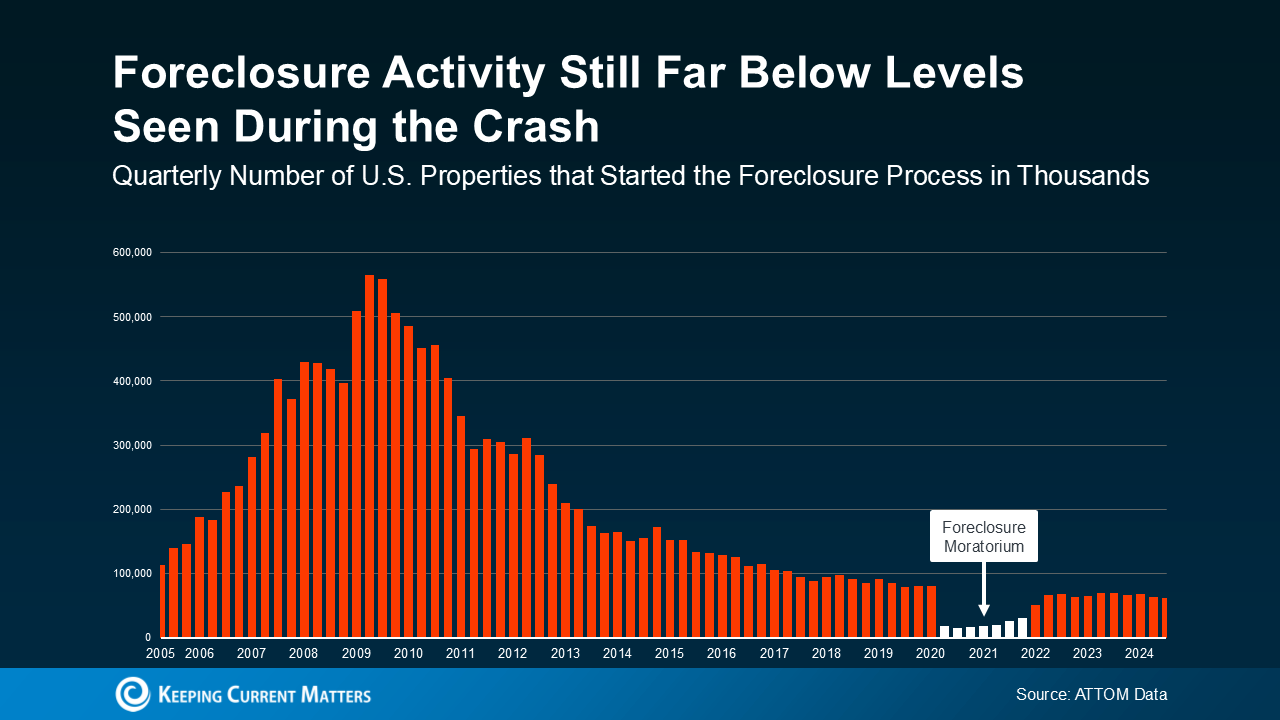Recent analysis from Keeping Current Matters demonstrates that despite current economic pressures, today’s housing market shows remarkable resilience compared to the 2008 financial crisis. Their article, “Why Today’s Foreclosure Numbers Won’t Trigger a Crash,” presents compelling evidence that current foreclosure trends differ substantially from those that precipitated the last housing crash.
According to ATTOM Data, current foreclosure activity remains significantly below historical crisis levels. While there has been a modest uptick in foreclosure filings since the expiration of the pandemic-era moratorium (indicated in white on the graph), these numbers pale in comparison to the peak levels observed during 2009-2010, when quarterly foreclosure initiations exceeded 550,000 properties.
The key differentiator between today’s market and the 2008 crisis lies in home equity positions. Contemporary homeowners generally maintain substantial equity buffers in their properties, providing financial flexibility during periods of economic stress. This stands in stark contrast to the 2008 crisis, when negative equity positions were widespread, leaving homeowners with few options when facing financial hardship.
Despite increased cost-of-living pressures across the economy, this equity cushion continues to serve as a stabilizing force in the housing market. The temporary spike in foreclosure activity following the moratorium’s end represents a return to normal market operations rather than systemic distress. Current data shows quarterly foreclosure initiations hovering around 75,000 properties – approximately one-seventh of crisis-era peaks.
This market stability persists even as consumers navigate higher interest rates and inflation. The data suggests that fundamental market conditions remain sound, with homeowners better positioned to weather economic fluctuations than their 2008 counterparts.
Credit: Analysis based on Keeping Current Matters’ article “Why Today’s Foreclosure Numbers Won’t Trigger a Crash,” featuring ATTOM Data.


 Facebook
Facebook
 X
X
 Pinterest
Pinterest
 Copy Link
Copy Link


